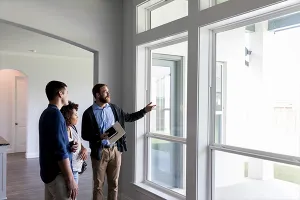
In real estate, where almost every buyer is looking online before they tour a property, first impressions are everything. Increasingly, buyers expect homes to look like they belong on TV design shows or worthy of an Instagram reel. In fact, about half of real estate agents say home buyers heading into a house hunt expect homes to look like they were professionally staged for television, according to the newly released “2025 Profile of Home Staging,” a survey of about 1,200 real estate professionals conducted by the National Association of REALTORS®.
That may explain why more than half—58%—of real estate professionals reported that buyers were disappointed when the homes they visited didn’t live up to what they saw on TV. In fact, 73% of agents blamed home design shows for creating unrealistic expectations, the report finds.
To meet buyers’ rising expectations and avoid buyer disappointment, many real estate agents turn to home staging. They say staging can not only help buyers envision themselves in the space but also have a measurable impact on the home’s market performance. NAR’s report suggests staging could even boost a home’s sales price by up to 10%, in some cases.
Staging is “merchandising” a property, says Cara Ameer, a real estate broker and agent with Coldwell Banker Vanguard Realty, who’s licensed in both Florida and California. “You’re trying to create an experience when a buyer walks through the home. It’s very effective in defining spaces and the lifestyle look that goes with that house or area.”
The Case for Home Staging
Here’s how respondents to NAR’s “2025 Profile of Home Staging” report responded when asked about the benefits of staging.
It helps buyers visualize how they’d live in the property. Eighty-three percent of buyers’ agents said staging made it easier for home buyers to visualize the property as their future home. Ameer notes that it could be particularly beneficial when the layout is challenging because it can show home shoppers what could fit and where.
It can result in a higher offer. Real estate agents say home staging can help their sellers net more money for a home. About 30% of real estate professionals reported a 1% to 10% increase in home value that they attributed to staging (19% of listing agents said staging increased offers by 1%–5% over similar, un-staged homes and 10% of listing agents noting a 6%—10% increase).
It can reduce time on the market. About half of real estate pros reported faster home sales: Thirty percent of listing agents reported a slight decrease in market time from home staging, whereas 19% reported a “greatly reduced” time for a home staying on the market. Only 4% of agents said that staging increased the time on the market.

“The typical home seller resides in their home for 10 years before selling,” says Jessica Lautz, NAR’s deputy chief economist. “During that time, homeowners might overlook certain aspects that could be less appealing to potential buyers. By staging a home, agents who are REALTORS® strategically highlight the best features, ensuring sellers receive the most competitive offers.”
First Impressions Matter
Chris Lim, executive vice president and chief growth officer at RE/MAX with two decades in the real estate industry, is a strong advocate for staging—not just for setting the tone during in-person tours but also for improving online photos.
“We know most home buyers start their search online, so first impressions are really important,” Lim says. “Buyers may forgo seeing a home if it doesn’t show itself in a certain way online.” One-third of buyer’s agents say that buyers were more willing to walk through a staged home they saw online, according to NAR’s report.
Buyers’ agents report the top four most important elements that their clients liked to see with listings: Photos, traditional staging, video tours and virtual tours, NAR’s report finds.
What to Stage—and What Not To
According to the NAR report, agents report the following key areas to stage:
- Living room
- Primary bedroom
- Kitchen
- Dining room
- Outdoor spaces
Less emphasis is placed on staging guest bedrooms and children’s rooms, the report finds.
While many agents see the value in home staging, only 21% of sellers’ agents said they staged all listings prior to listing them for sale. Another 10% said they staged only difficult-to-sell properties.
The costs involved with home staging are one barrier for listing agents. On average, the median cost for using a staging service is around $1,500. When agents take on the staging themselves, that figure drops to about $500, the report finds. As far as who pays for the staging service, about a quarter of agents say they offer staging services themselves; 17% say the seller covers the cost.
Alternatives to Full Staging
Even when staging isn’t done, real estate agents advise sellers to prepare the homes by decluttering and fixing any visible issues. In fact, more than half of agents said they don’t stage homes but do suggest simple improvements. The top recommended home improvements include:
- Decluttering
- Full-home cleaning
- Enhancing curb appeal
- Taking professional photos
- Minor repairs
- Carpet cleaning
- Depersonalizing
- Paint touch-ups or repainting
- Landscaping
- Re-grouting tile
- Removing pets during showings
For more tips on prepping and staging a home for sale, check out REALTOR® Magazine’s Styled Staged & Sold blog.









